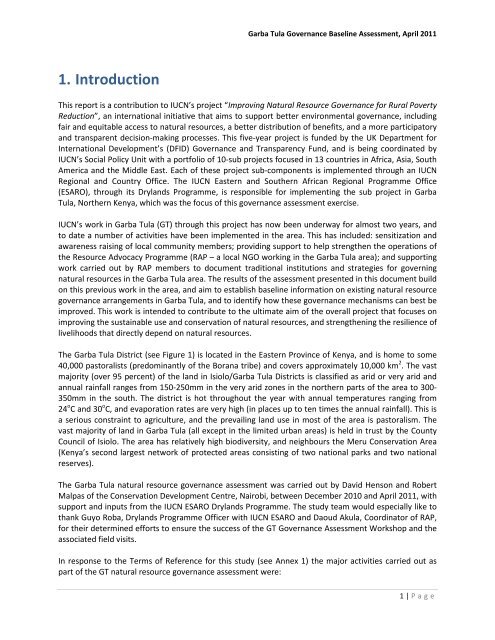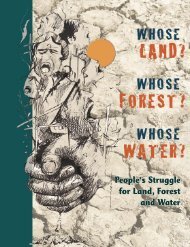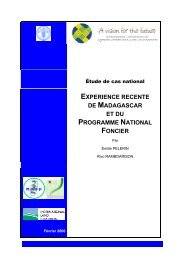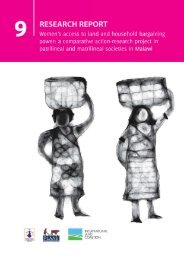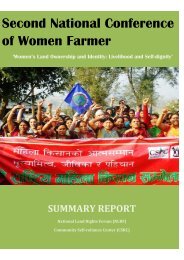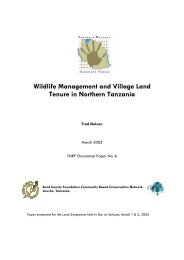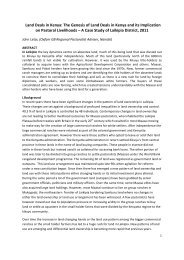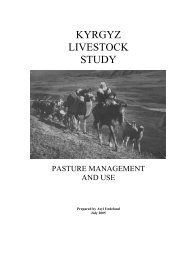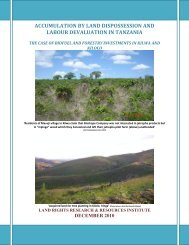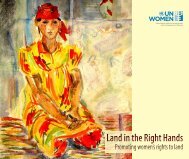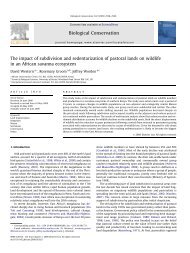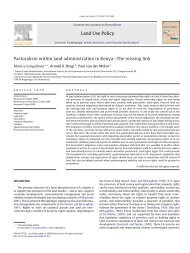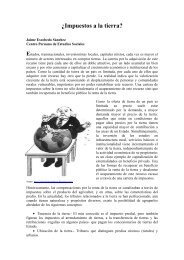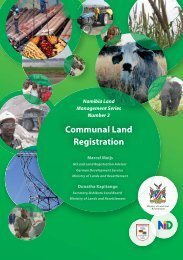Garba Tula Governance Assessment Final Report ... - Land Portal
Garba Tula Governance Assessment Final Report ... - Land Portal
Garba Tula Governance Assessment Final Report ... - Land Portal
Create successful ePaper yourself
Turn your PDF publications into a flip-book with our unique Google optimized e-Paper software.
1. Introduction<br />
<strong>Garba</strong> <strong>Tula</strong> <strong>Governance</strong> Baseline <strong>Assessment</strong>, April 2011<br />
This report is a contribution to IUCN’s project “Improving Natural Resource <strong>Governance</strong> for Rural Poverty<br />
Reduction”, an international initiative that aims to support better environmental governance, including<br />
fair and equitable access to natural resources, a better distribution of benefits, and a more participatory<br />
and transparent decision-making processes. This five-year project is funded by the UK Department for<br />
International Development’s (DFID) <strong>Governance</strong> and Transparency Fund, and is being coordinated by<br />
IUCN’s Social Policy Unit with a portfolio of 10-sub projects focused in 13 countries in Africa, Asia, South<br />
America and the Middle East. Each of these project sub-components is implemented through an IUCN<br />
Regional and Country Office. The IUCN Eastern and Southern African Regional Programme Office<br />
(ESARO), through its Drylands Programme, is responsible for implementing the sub project in <strong>Garba</strong><br />
<strong>Tula</strong>, Northern Kenya, which was the focus of this governance assessment exercise.<br />
IUCN’s work in <strong>Garba</strong> <strong>Tula</strong> (GT) through this project has now been underway for almost two years, and<br />
to date a number of activities have been implemented in the area. This has included: sensitization and<br />
awareness raising of local community members; providing support to help strengthen the operations of<br />
the Resource Advocacy Programme (RAP – a local NGO working in the <strong>Garba</strong> <strong>Tula</strong> area); and supporting<br />
work carried out by RAP members to document traditional institutions and strategies for governing<br />
natural resources in the <strong>Garba</strong> <strong>Tula</strong> area. The results of the assessment presented in this document build<br />
on this previous work in the area, and aim to establish baseline information on existing natural resource<br />
governance arrangements in <strong>Garba</strong> <strong>Tula</strong>, and to identify how these governance mechanisms can best be<br />
improved. This work is intended to contribute to the ultimate aim of the overall project that focuses on<br />
improving the sustainable use and conservation of natural resources, and strengthening the resilience of<br />
livelihoods that directly depend on natural resources.<br />
The <strong>Garba</strong> <strong>Tula</strong> District (see Figure 1) is located in the Eastern Province of Kenya, and is home to some<br />
40,000 pastoralists (predominantly of the Borana tribe) and covers approximately 10,000 km 2 . The vast<br />
majority (over 95 percent) of the land in Isiolo/<strong>Garba</strong> <strong>Tula</strong> Districts is classified as arid or very arid and<br />
annual rainfall ranges from 150-250mm in the very arid zones in the northern parts of the area to 300-<br />
350mm in the south. The district is hot throughout the year with annual temperatures ranging from<br />
24 o C and 30 o C, and evaporation rates are very high (in places up to ten times the annual rainfall). This is<br />
a serious constraint to agriculture, and the prevailing land use in most of the area is pastoralism. The<br />
vast majority of land in <strong>Garba</strong> <strong>Tula</strong> (all except in the limited urban areas) is held in trust by the County<br />
Council of Isiolo. The area has relatively high biodiversity, and neighbours the Meru Conservation Area<br />
(Kenya’s second largest network of protected areas consisting of two national parks and two national<br />
reserves).<br />
The <strong>Garba</strong> <strong>Tula</strong> natural resource governance assessment was carried out by David Henson and Robert<br />
Malpas of the Conservation Development Centre, Nairobi, between December 2010 and April 2011, with<br />
support and inputs from the IUCN ESARO Drylands Programme. The study team would especially like to<br />
thank Guyo Roba, Drylands Programme Officer with IUCN ESARO and Daoud Akula, Coordinator of RAP,<br />
for their determined efforts to ensure the success of the GT <strong>Governance</strong> <strong>Assessment</strong> Workshop and the<br />
associated field visits.<br />
In response to the Terms of Reference for this study (see Annex 1) the major activities carried out as<br />
part of the GT natural resource governance assessment were:<br />
1 | P a g e


